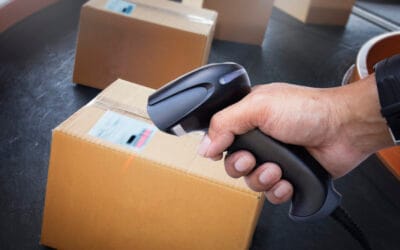
A maintenance strategy is essential in ensuring that your asset operations are running smoothly. You’ll likely already have a maintenance strategy in place, but the more manual this is, the more likely you’ll encounter gaps in accountability.
Automation is the future when it comes to all operations, and with maintenance, it’s no different. When you use asset tracking software, you can keep track of your asset information, lose fewer assets, and keep your existing assets running as smoothly as possible.

The Concept Behind Asset Tracking Software
The concept behind asset tracking software is simple. Asset tracking software gives you a place to house your assets. Each of your assets gets a unique digital profile that you can then populate with critical data.
You can also link your digital profiles with their physical asset counterparts by using asset tags. So, if you’re using asset tracking software for IT asset management, you’ll be able to log your laptop and link the physical kit with the digital asset with a QR tag or barcode.
Once you’ve logged your assets’ digital profiles, you can continue to add, update and amend data to them. This creates an audit trail that you can use to monitor how your assets are being used, where they are and how they’re performing.
This data is then exportable as a fixed asset register that you can then use for insurance, tax, and accountability purposes.
Creating Routine, Reactive And Pre-emptive Maintenance Strategies
Crucially, as your assets are logged as unique profiles, you’ll be able to add maintenance information and data against the assets themselves. In other words, if your IT equipment has different PAT test dates, you’ll be able to log each date against each asset.
This will be by using a reminders feature, which you can also set to repeat. When maintenance is due, you’ll receive an email indicating that maintenance needs to be performed.
Critically, you can also use your asset tracking software as an equipment checkout system, meaning that when maintenance is due, you can check the asset out to indicate to your team that it is undergoing downtime.
You will also be able to use an issues management system. This allows you to report issues against assets with ease, as all you need to do is scan an asset’s tag and report the issue.
itemit uses a public profiles feature, too, which allows anyone to report issues on assets without needing access to the itemit app. Therefore, if you’re using itemit for facilities management, you’ll be able to allow your tenants to report issues on doors, rooms, and fire extinguishers.
Using Your Fixed Asset Register
All of your data automatically updates your fixed asset register, which you’ll then be able to export and use for any number of asset operations.
On a reporting page, too, you’ll be able to create customised reports to view your maintenance information and to allow for a better decision making process when it comes to decommissioning or replacing assets.
Your fixed asset register, when exported, will show all of your asset data, or asset data you’ve decided needs to be exported. This fixed asset register will be up to date from your daily asset tracking operations, reducing the risk of ghost and zombie assets.
Also, your fixed asset register will be usable in your finances, expenses, and tax operations as it will show a clear view of what you own and how it is behaving.
itemit’s Fixed Asset Tracking Software
itemit’s fixed asset tracking software gives you all of this and more. With itemit, you’ll be able to create and maintain an accurate fixed asset register while also tracking assets in a very granular way.
The features available to you are built off the back of feedback we’ve received from our customers, so no matter the industry you’re in (as itemit is in many), we’re certain you’ll be able to use itemit to suit your asset tracking requirements.
Making a maintenance strategy is simple, too, when you have a clear view of where assets are, how they’re behaving, and who has been using them. Overall, you get more accountability and control over your assets when you use itemit.
To find out more about how itemit can help your business, you’ll be able to contact the team at team@itemit.com. You can also fill in the form below to start your 14-day free trial.

Try itemit
Choose a better way to track your assets. Start your free 14-day trial now!

Keep Learning
itemit Blog
Tips, guides, industry best practices, and news.
Choosing the Right Indoor Asset Tracking System
From demand created within the health sector to manufacturing, efficiency demands in indoor asset tracking go up. In business, companies want to track their valuable machinery, equipment, and other assorted assets, which are also in constant motion through indoor environments via complicated routes. Indoor asset tracking presents challenges different from those of the outdoor variety, which could employ GPS and other wide-capability technologies.
What Digital Asset Management Is?
[lwp_divi_breadcrumbs font_icon="5||divi||400"...
What is an IT Asset Register?
An IT asset register helps to ensure all your hardware and computers are logged and monitored correctly. Instantly see where equipment is and who has it.



